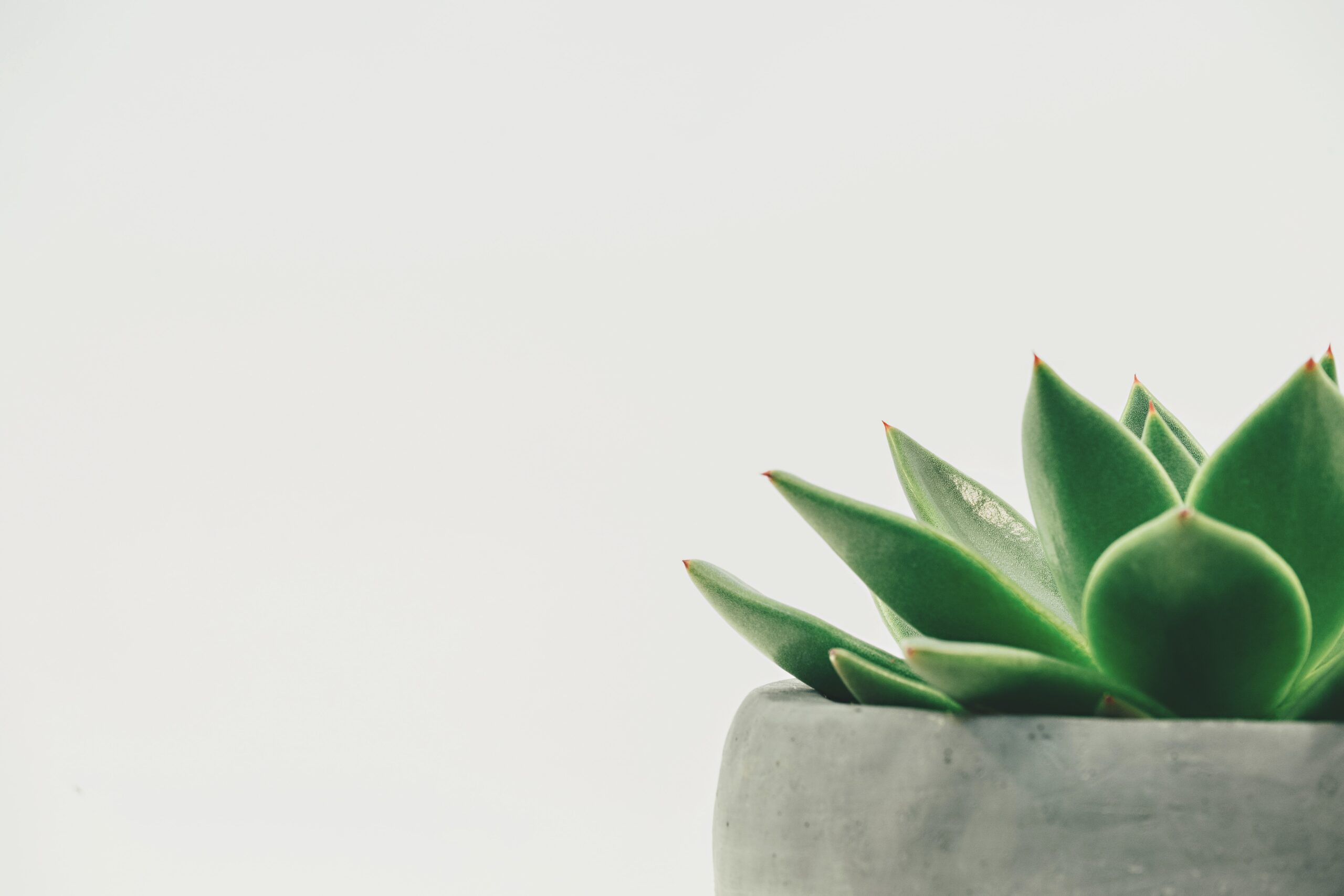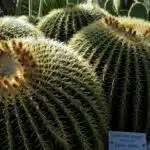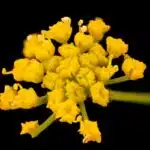Growing and caring for a Duranta Plant (Golden Dewdrop) can seem daunting, especially if you don’t have a green thumb. But with the right information and tips, it’s easy to enjoy the beauty of these gorgeous flowers in your home. The Duranta Plant is not only beautiful but also low-maintenance, making it ideal for gardening novices who are looking to add a splash of color to their living space without having to spend too much time tending to it. Here we’ll look at how you can grow and care for your Duranta Plant successfully so that you can admire its beauty all year round!
The Duranta Plant isn’t just aesthetically pleasing – it comes with many benefits too. Its colorful blooms attract hummingbirds and butterflies, which adds life and energy to your garden. Plus, its fragrant aroma brings a pleasant scent into your home or outdoor living space. And because it’s drought-tolerant, you don’t need to worry about watering it frequently or having an overly green thumb in order to keep this plant alive!
Duranta Plant care may seem intimidating at first, but once you know what kind of environment they like best, how much sun they need, watering tips and other maintenance needs such as pruning, then growing them is a breeze. With the right information and tips here, you’ll be able to successfully grow this lovely plant in no time!
What Is Duranta Plant (Golden Dewdrop)?
Duranta Plant (Golden Dewdrop) is a beautiful flowering shrub that is native to the tropical regions of Central and South America. It produces clusters of small, star-shaped flowers in shades of purple, blue, or white. The golden dewdrop is also known for its bright green foliage and yellow berries. This plant has become increasingly popular as an ornamental shrub in backyards and gardens for its stunning beauty and ease of care.
When planting duranta, it’s important to select a spot that gets plenty of sunlight but not too much direct sun. The soil should be well-draining and kept slightly moist at all times. Duranta can also benefit from compost or manure added prior to planting and periodic fertilizing during the growing season. Watering should be done when the top inch of soil becomes dry, but take care not to overwater as this can cause root rot.
Prune your duranta regularly to maintain shape and encourage new growth. Pruning should be done after flowering has finished in late summer or early fall while avoiding cutting more than one-third of the stems at once. If you live in a colder climate, you may want to cover your duranta with mulch or a frost blanket during winter months to protect against temperatures below 20 degrees Fahrenheit (-6 Celsius). With proper care, your golden dewdrop will thrive and provide years of beauty in your garden!
Where To Plant Duranta?
When deciding where to plant a duranta plant (golden dewdrop), it is important to consider the environment in which the plant will thrive. For example, Nick wanted to add some beauty to his outdoor patio, so he planted a golden dewdrop in a partially shaded spot that received about four hours of sunlight a day. With the right location, duranta plants can be relatively low maintenance and provide long-lasting beauty.
Duranta should be planted in an area with good drainage, as they are not tolerant of waterlogged soil. Additionally, these plants prefer soil that is slightly acidic and rich in organic matter. If planting more than one duranta, remember to leave plenty of room for them to grow—each mature plant may reach five feet tall!
Lastly, make sure the location for your duranta receives at least four hours of sunlight per day. While this species can tolerate full sun or partial shade, it will produce fewer blooms without enough light. When choosing a spot for your duranta plant (golden dewdrop), select an area with well-draining soil and plenty of light to ensure optimal growth and health.
Sun Requirements For Duranta
Duranta (Golden Dewdrops) has stunning foliage and blooms, so it’s no surprise that many gardeners want to include them in their outdoor spaces. When growing a duranta plant, it is important to pay attention to its sun requirements. Here’s what you need to know about providing your duranta with the right amount of sun.
First and foremost, durantas prefer full sun or partial shade. If they are planted in an area that receives too much shade or not enough sun, the plants will become leggy and may stop flowering altogether. In general, six hours of direct sunlight per day is ideal for this plant species.
It is also important to note that some varieties of duranta can tolerate more intense sunlight than others. For example, the ‘Gold Edge’ variety of duranta can handle full afternoon sun in hot climates without any issues. However, other varieties such as ‘Geisha Girl’ may require protection from intense sunlight during the hottest part of the day in order to thrive.
With proper care and placement, a duranta plant can be an attractive addition to any landscape that can provide a burst of color when it flowers in late summer and fall. By understanding the specific needs of your chosen variety and giving it the right amount of sunlight each day, you’ll be able to keep your duranta happy and healthy for years to come!
Soil Requirements For Duranta
Reveling in its vibrancy, the golden dewdrops—more commonly known as duranta—are a perfect way to add a splash of color to any outdoor space. But if you want your duranta plant to thrive, soil is an important consideration. Let’s explore what kind of soil will help it reach its maximum potential.
To begin with, the soil should be well-draining and aerated. An ideal mix is one part topsoil and two parts compost or peat moss. The compost or peat moss helps retain moisture while allowing excess water to drain away from the roots of the plant. Additionally, a layer of mulch around the base of the plant can help maintain even soil temperatures and keep weeds at bay.
Duranta also prefers acidic soils with a pH between 5.5 and 6.5 for optimal growth and blooming performance. To ensure that your soil has the right acidity level, you can purchase a pH testing kit from your local garden center and adjust accordingly by adding lime or sulfur as needed.
By providing your duranta with well-draining yet moisture-retentive soil in an acidic environment, you’ll give it everything it needs to reach its full potential!
Watering Duranta
As the golden dewdrops of the Duranta plant grace our homes, it is important to understand how to properly water and care for them. With a few simple tips and tricks, you can keep your Duranta plants looking their best! Let’s take a journey through this comprehensive guide on watering Duranta, from anachronisms to bullet point lists – we’ll have your plant thriving in no time!
To start off with a bang, let’s look at an anachronism: when caring for your Duranta, think of it as giving your plant a good old-fashioned ‘drink of the gods’! While this may sound like an exaggeration, proper watering is essential to ensure that your Duranta stays healthy and blooms profusely. Here are some key points to consider when watering:
• Frequency: Your Duranta should be watered once or twice a week depending on the season and soil moisture levels. • Amount: The amount of water required depends on the size of the pot but generally ranges between 10-20 liters per week. • Temperature: Water should always be lukewarm or room temperature – never cold! • Quality: Tap water is fine for most plants, however if you have hard water or live in an area with high levels of chlorine then filtered or rainwater is recommended. • Timing: Morning or evening are ideal times as it allows the water to soak into the soil before it evaporates due to heat from the sun.
These five points are key when it comes to providing your plant with adequate hydration. To make sure that you don’t miss any important details, here’s a handy checklist for you to follow along with:
• Frequency: Once/Twice per week ➥ Sub-list 1 – Summer (frequent) vs Winter (less frequent) ➥ Sub-list 2 – Soil Moisture Levels (check weekly) • Amount: 10-20 liters per week ➥ Sub-list 3 – Pot Size (varies) • Temperature: Lukewarm/Room Temperature • Quality: Tap Water/Filtered/Rainwater (depending on location) • Timing: Morning/Evening (allow time for soaking in)
Now that we’ve gone through all aspects of watering your Duranta successfully, let’s move onto fertilizing – where things start to get really interesting! We’ll cover everything from organic composts and slow release formulas, so stay tuned!
Fertilizing Duranta
Fertilizing duranta is fundamental for flourishing foliage. Feeding this fabulous flora offers the perfect platform for producing plentiful petals and pompoms. To fertilize successfully, savvy gardeners should stick to these simple steps:
• Choose a fertilizer with a balanced NPK ratio (like 10-10-10). • Dilute the fertilizer as directed on the packaging. • Apply monthly during the growing season (spring to fall). • Water immediately after application to prevent burning of roots. • Avoid over-fertilizing, which can cause leaf burn.
When it comes to fertilizing duranta, regularity is rewarded with robust growth and vibrant blooms. It’s important not to be overly ambitious – too much fertilizer leads to leaf burn, while applying less than enough will produce smaller plants with fewer flowers. To make sure your plants get just what they need, stick to the guidelines outlined above and you’ll be sure to have a successful fertilizing experience that encourages lush leaves and plenty of petals! Now that you know how to fertilize duranta effectively, it’s time for the next step in caring for this delightful plant: pruning!
Pruning Duranta
Pruning duranta plants is a vital part of their health and growth. Properly pruning your duranta can help increase air circulation, promote flowering, and keep the shape of the plant attractive. It’s important to note that durantas aren’t heavy pruners – you don’t want to overdo it! Here are four helpful tips for pruning your golden dewdrops:
Prune during late winter or early spring before the new growth appears. This will result in a healthier, bushier plant.
Use sharp, clean shears and prune just above a leaf node or bud so that the cut is flush with the stem. This will encourage the plant to produce more buds and flowers.
Remove any dead, damaged, or diseased branches as soon as you notice them. This will prevent further damage to the rest of the plant.
Trim off any errant stems or branches to maintain a neat appearance and promote air circulation among all parts of the plant.
Though pruning isn’t complicated for duranta plants, it does require diligence and attention to detail. When done correctly, it should result in healthier plants with improved air circulation that are better able to resist pests and diseases. Onward we go into understanding more about these common issues with golden dewdrops!
Common Pests And Diseases
Pests and diseases can be a major concern for any gardener. Fortunately, duranta plants are generally pest free and resistant to most common pests and diseases. However, there are still some potential issues gardeners should be aware of when it comes to growing and caring for these beautiful golden dewdrops. Here are the most common pests and diseases that may affect durantas:
• Spider mites: These tiny insects feed on the sap of duranta leaves, leaving them discolored or spotted. To prevent spider mite infestations, gardeners should keep their plants away from other infested plants and regularly monitor their durantas for signs of damage.
• Aphids: Like spider mites, aphids also suck the sap out of duranta leaves, resulting in wilting or curling foliage. Regularly spraying with a hose or insecticidal soap can help reduce aphid populations.
• Powdery mildew: This fungus is typically caused by high humidity and can cause yellow spots on the tops of duranta leaves as well as white patches on their undersides. Proper air circulation and watering your plant at soil level can help prevent powdery mildew from occurring.
Fortunately, these pests and diseases don’t usually cause serious harm to durantas but they can still be unsightly if left unchecked. Taking preventive measures such as proper spacing between plants and regular monitoring will help ensure your durantas stay healthy throughout the growing season. With the right care, you’ll be sure to enjoy many years of beautiful golden dewdrops in your garden!
With all this knowledge about how to best care for your durantas in mind, it’s time to get going on transplanting them into larger pots or outdoor areas if you want to continue watching them thrive!
Transplanting Duranta
Transplanting duranta may seem like a daunting task, but it is actually quite straightforward. When done correctly, transplanting can help your duranta plant thrive and become a beautiful addition to your garden. Despite its simplicity, it is important to take your time and be mindful of the plant when transplanting.
First and foremost, you should choose the right environment for transplanting duranta. The soil must be well-draining and nutrient-rich in order to support the growth of your duranta. You’ll also want to ensure that the area gets plenty of sunlight so that the plant can photosynthesize properly. Make sure you have all of these elements in place before attempting to transplant duranta.
When it comes time for the actual process, make sure you are gentle with your plant and handle it carefully as you dig up its roots and transfer it into its new home. If you feel comfortable enough, use a shovel or other tool to dig around the root ball gently before transferring it into its new spot. Once you have planted your duranta in its new location, water thoroughly and put some mulch around the base to keep moisture in while encouraging further growth of healthy roots.
Transplanting duranta doesn’t have to be a difficult process if you take care to choose the right environment for your plant and handle it carefully during the process. With some patience and understanding of how best to move your plant from one spot to another, you can ensure that your golden dewdrops will thrive for years!
Propagating Duranta
Propagating Duranta is a great way to increase your collection of this beautiful and easy-to-care-for plant. It’s an incredibly simple process that requires just a few basic tools and materials. Duranta can be propagated from both cuttings and seeds, so it’s up to you to decide which method you prefer.
When propagating from cuttings, the best time of year is usually during the spring or early summer. Cut the stem just below a node (where leaves come out of the stem), making sure each cutting is several inches long. Then dip the end of each cutting in rooting hormone and place them in well-draining potting soil or vermiculite. Place the pots in a warm, sunny location, keeping the soil moist but not wet. With patience and diligence, you should see new roots start to form within a few weeks!
Propagating from seeds is also relatively easy. Plant your Duranta seeds in well-draining soil at least 1/4 inch deep, covering lightly with soil after planting. Make sure the area receives plenty of sunlight and keep it moist but not soggy until germination occurs (this could take anywhere from 7 to 21 days). When seedlings are large enough to handle without damaging them, transplant into separate containers filled with potting mix or compost.
TIP: If you’re propagating from cuttings, use sharp scissors or pruning shears for precise cuts – this will help ensure successful rooting!
Best Uses For Duranta
Duranta is a stunning plant that can be used in many creative ways to accentuate your outdoor spaces. It is drought-tolerant and provides beautiful golden foliage and blooms throughout the year. In this article, we will explore the best uses for duranta and how you can use it to design your outdoor spaces.
Duranta makes an excellent accent plant in gardens or around patios or porches. Its bright yellow foliage stands out amongst other plants and adds a unique pop of color to any garden. You can also use it as a hedge or border plant along pathways, driveways, or walkways. This hardy shrub will thrive with minimal attention, so you won’t have to worry about constantly pruning or tending to it.
Duranta is also great for containers since its roots don’t spread quickly like some other plants do. By planting one in a container, you’ll be able to move it around if desired without worrying about damaging its roots. Group several durantas together for maximum impact and enjoy their vibrant foliage throughout the season! The cascading branches of the duranta also add texture and depth when planted near water features such as ponds or fountains.
By following basic care instructions and understanding the best uses for duranta, you can easily create eye-catching displays in your outdoor spaces. With its versatile nature and striking appearances, this attractive shrub is sure to become a favorite centerpiece in your garden! Now let’s explore some design ideas for duranta that will help bring life and beauty into your outdoor living areas.
Design Ideas For Duranta
Cascading with beauty, Duranta plants are a delightful sight that can serve a variety of purposes in your garden. Whether you’re looking for an eye-catching addition to your patio or a useful hedge along the walkway, Duranta is sure to leave you dazzled. Here are some design ideas for incorporating this stunning plant into your landscape:
• Create a border – Plant Duranta along the edges of your garden to create a vibrant barrier between you and the neighbor’s yard. • Add color – Plant colorful varieties of Duranta around pathways or in containers for an instant pop of color and beauty. • Plant as an accent – Place tall, slender Duranta near taller trees or shrubs to add texture and contrast.
Duranta is the perfect plant to enhance any outdoor space because it offers both beauty and utility. With its bright foliage and delicate flowers, it adds visual interest while also providing privacy and protection from harsh winds or sun. And if you’re worried about how much care they require, don’t be! Duranta plants are easy to maintain with minimal effort – just be sure to give them plenty of water and fertilize regularly so they can reach their full potential!
Troubleshooting Duranta Problems
Troubleshooting duranta problems can be like trying to solve a puzzle – it takes patience and persistence. For example, my neighbor was dealing with yellowing leaves on his duranta plant and had no idea how to fix it. After much trial and error, we were able to identify the cause as over-watering and adjust his watering schedule accordingly.
This is just one example of how tricky troubleshooting duranta problems can be. The key is to identify the underlying cause of the issue before taking action. It could be something as simple as too much water or too little sunlight, or something more complicated like nutrient deficiencies or disease. Taking the time to diagnose the problem before making any changes will save you lots of time and frustration in the long run.
The good news is that there are plenty of resources available online that can help you troubleshoot duranta problems. From detailed care guides to helpful forums, there’s an abundance of information out there if you know where to look! Armed with this knowledge, you’ll be better prepared to tackle any issues that arise with your duranta plant – giving you peace of mind and ensuring your golden dewdrops stay healthy for years to come. With this in hand, let’s take a look at some tips for growing duranta…
Tips For Growing Duranta
Growing Duranta is a surprisingly simple task – so much so, that even the least green-thumbed person can do it! But, if you’re looking to get the best out of your golden dewdrops, then there are some tips and tricks to make sure they reach their full potential. Let’s take a look at what we can do to help our Duranta reach its full glory.
Firstly, Duranta plants need plenty of sun – but not too much! So make sure you find a spot in your garden or patio that gets around six hours of direct sunlight per day. Secondly, water your Duranta regularly – but don’t saturate it. A gentle watering every few days should be enough to give it what it needs. Finally, fertilize your Duranta with a balanced fertilizer once every two weeks during the growing season for an extra nutrient boost!
By following these steps, you’ll ensure that your Duranta plant will flourish and reach its full potential – all without breaking a sweat. Now that we know how to nurture our golden dewdrops, let’s take a closer look at the advantages of growing them!
Advantages Of Growing Duranta
When it comes to ornamental plants, Duranta or Golden Dewdrops is one of the most sought-after and beloved. This plant offers multiple advantages for gardeners looking for an eye-catching and easy-care option for their outdoor space. Let’s take a look at what makes this plant so special.
For starters, it’s incredibly versatile. The Duranta is a tropical plant that can thrive in full sunlight or partial shade. As the name implies, its foliage has a golden hue that brightens up any garden and adds interest all year round. Plus, it produces stunning blue flowers in summer and attracts plenty of birds and butterflies!
Plus, you don’t need to be an expert gardener to get a beautiful Duranta in your yard. As long as you provide regular water and light pruning to keep it healthy, it will reward you with its breathtaking beauty. And if you live in a cooler climate, you could even try growing them indoors with well-drained soil and enough light from the sun or an artificial source.
Duranta truly is one of those rare plants that make caring for them a pleasure – not just for its beauty but also because of how hardy they are!
Frequently Asked Questions
How Long Does It Take For Duranta To Flower?
Duranta, often referred to as golden dewdrops, is a popular garden plant renowned for its bright blue flowers and yellow-gold foliage. On average, it takes duranta plants 4 months to flower; however, under ideal conditions they can flower in only 2 months. Here are some tips to help you get the most out of your duranta plant:
- Ensure your duranta gets at least 6 hours of direct sunlight daily – this will ensure that it flowers quickly and abundantly.
- Water your duranta deeply 1-2 times per week – but be sure to avoid overwatering!
- Fertilize with a balanced fertilizer every 3-4 weeks to promote healthy growth and flowering.
If you follow these steps carefully, you can expect your duranta plant to start blooming in no time! With its vibrant colors and sweetly scented blooms, the duranta is sure to add beauty and life to any garden or outdoor space. Plus, it’s an easy-to-care-for plant that requires minimal effort and maintenance – what could be better?
How Often Should Duranta Be Fertilized?
Duranta plants, also known as Golden Dewdrops, are beautiful and lush additions to any garden. But if you want them to really thrive and flower, it’s important to know how often they should be fertilized. It’s a bit like the old adage: “You can lead a horse to water, but you can’t make it drink.” You want your Duranta plant to drink up the nutrients it needs for healthy growth!
When caring for Duranta plants, fertilization is key. Depending on how much organic material is in the soil, fertilizer should be applied every two to four weeks during the growing season—usually from early spring through late autumn. Organic fertilizer with an N-P-K ratio of 10-10-10 works well; use one tablespoon per gallon of water and apply directly to the soil at the base of the plant. When applying fertilizer in this way, avoid getting any on the leaves and stems as that could damage them.
It’s also important not to overfertilize your Duranta plant. Too much fertilizer can burn its roots or even kill it outright! To avoid this, always follow the recommended dosage instructions on your fertilizer package when measuring out doses for application. If you stick with a consistent fertilizing schedule and practice proper application techniques, your Duranta will grow lush and healthy with plenty of beautiful blooms come springtime!
What Is The Optimal Temperature Range For Duranta?
Caring for your Duranta plant (Golden Dewdrops) requires knowledge about the optimal temperature range for its growth. This is important for ensuring that your plant remains healthy and blooms brightly.
Optimal temperatures for Duranta plants are considered to be between 65-85 degrees Fahrenheit during the day, and between 60-75 degrees Fahrenheit at night. It’s best to avoid extreme temperatures, as this can cause stress on your plant. Make sure to monitor the temperature in the area where you’re growing your Duranta, especially when growing outdoors.
If you cannot provide a consistent temperature, it may be beneficial to keep your Duranta inside in an area with more climate control. If you choose this option, make sure you place it in an area near a window or other source of natural light so that it can still get plenty of sun exposure. Taking these steps will help ensure that your Duranta stays healthy and grows strong!
How Much Space Should Be Left Between Duranta Plants?
Gardening can be an enjoyable exercise, especially when one gets to tend to beautiful golden dewdrops – Duranta plants. But in order to ensure the longevity and beauty of these plants, there are certain tips and tricks that must be kept in mind. One such important factor is the spacing between the Duranta plants.
The question then arises – how much space should be left between Duranta plants? Well, it all depends on the variety of Duranta that you have planted in your garden! Generally speaking, these lush green beauties require 18-24 inches of space between them for proper growth and development. However, if you are dealing with a more compact variety such as Gold Mound or Golden Edge, then 12 inches would suffice.
These lovely plants need adequate space to stretch their roots and reach out for nutrients and moisture from the soil. If they are planted too close together, then it will impede their growth and eventually result in overcrowding. Furthermore, it may also lead to poor air circulation which can cause fungal diseases or pest infestations. Therefore, keeping a generous distance between them is paramount for proper care and maintenance of Duranta plants.
How Can I Tell When Duranta Needs More Water?
Taking care of your duranta plant (golden dewdrops) is not a difficult task, but knowing when it needs more water can be tricky. If you’re unsure, there are a few telltale signs that you can look for to help you determine when it’s time to give your duranta some extra hydration.
First, check the leaves of your duranta. When they start to droop or wilt, this is usually an indication that the plant needs more water. You may also notice discoloration or yellowing of the leaves. This could be due to excessive heat and sun exposure or lack of water. Additionally, if the soil feels dry and crumbly when touched, then you should give the duranta a good drink!
To ensure that your duranta stays healthy and vibrant all year round, keep an eye out for these indicators of dehydration and provide it with enough water as needed. Watering your plants frequently during hot summer months will also help keep them looking their best. With proper care and attention, your golden dewdrops will thrive in no time!
Conclusion
The Duranta plant, also known as golden dewdrops, is a beautiful and unique addition to any outdoor garden. With its vibrant blooms, attractive foliage, and ease of care, it’s easy to understand why this plant has become so popular. Taking the necessary steps to properly care for your Duranta will ensure that you enjoy its beauty for years to come. From knowing how long it takes for Duranta to flower, to understanding the best temperature range and fertilization practices, you can easily give your Duranta the best environment for growth.
Duranta plants are like tiny works of art that require a bit of extra attention and dedication. But with a bit of knowledge and proper care, these delicate beauties can shine brightly in any garden. The rewards are well worth the effort; they bring life and color into an otherwise dull space, providing hours of enjoyment with their sweet-smelling blooms and cheerful foliage. Like all living things, they need a bit of love in order to thrive – but when given the right conditions, they will reward you tenfold with their beauty and grace.
Caring for your Duranta requires patience and dedication – but if you take the time to understand its needs and provide the proper environment for growth, you’ll be rewarded with a stunningly vibrant display that will add life and beauty to your outdoor garden space. So don’t be afraid to give your Duranta some extra TLC – it will truly be worth it in the end!





























